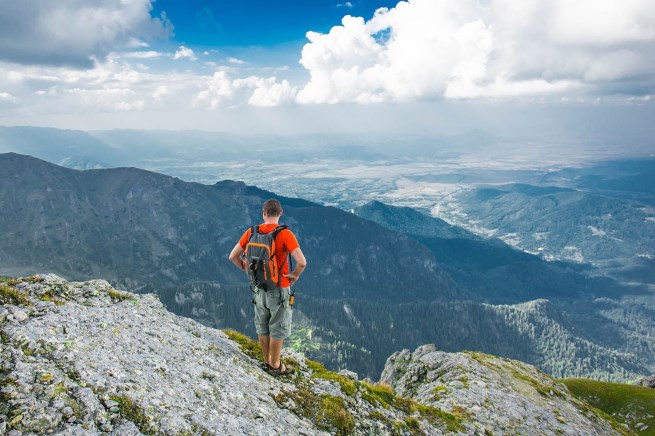Walking holidays with children

The hills are alive with the sound of…children crying. Taking your kids on a hiking trip might be some peoples idea of a worst nightmare. But follow these tips and the family will be all smiles for miles.
Advice and information
Children’s needs are very different depending on their age, which effects what they are capable of in terms of walking and hiking. To avoid problems, here are some points to be aware of:
 Up to 4 years old.
Up to 4 years old.
Until the age of 3, children are basically carried if their parents go for a walk of any length. Between the ages of 2 and 3, a child may seem like he or she has boundless energy, but their abdominal and back muscles and not properly formed, and they will not be able to maintain continuous walking for any length of time.
When a baby or child is being carried, you need to be particularly conscious of it’s needs in terms of being too hot or cold. Remember that you may be warm from the exertion of walking, but a baby that is being carried might be very cold.
From the age of 3, a child can start to try a bit of the walking, mixed with lots of play. You’ll need to be patient!
4 – 7 years old
Try to keep walks to an average of 1 – 2 hours at a time. The trick is to make the walk so interesting that the child forgets that he or she is on a walk. Make it an outing with an aim (e.g. visiting a castle or waterfall). Stop frequently to look at things of interest; animals in fields, a flower etc., sing songs together and tell stories and history about the things you see and the point of interest you are aiming for.
Children of this age love to feel grown up, so encourage them to want to be involved by giving them their own small day pack and asking them to help with map reading.
Avoid any extreme conditions; wind, cold, high extreme heat, long hikes. At this age, children are unable to properly understand their needs (thirst, hunger), which means they are still very vulnerable. If you’re on a walking holiday, intersperse 1 day of rest and play between 2 days of walking.
8 -12 years old
Now that the child’s endurance levels are higher, they can walk for extended periods of time (up to 10 – 15 km), especially if they are already used to walking. Give them responsibilities so that they are involved rather than being dragged along – map-reading, looking out for landmarks, deciding the itinerary etc.
Children walk well in groups, so invite some of their friends along or encourage siblings to walk together, as long as they won’t argue the whole way! If the terrain is safe, you can let them walk ahead, arranging frequent meeting places along the way.
To avoid upsets, make sure that the child eats and drinks regularly, and keep in mind that fatigue builds up during several days of exertion.
12 years and over
There is no problem physically at this age. Adolescents are very tough and recover very quickly. They do often feel tired, and this can hide more serious exhaustion. But the main problem at this age is a lack of motivation to go on long walks, and also a reluctance to walk with parents.
This doesn’t mean that they will never go on walks. Organised groups of teens do well together, such as with friends, on youth camps, in the scouts etc. In terms of walking with the family, they will be more likely to come along if you make it as exciting as possible; walking in gorges, walking abroad, over-night stops in mountain lodges.
Whichever conditions your teenager is walking in, it is crucial to remember that this age group require a lot more food than adults.
Share to: Facebook Twitter LinkedIn Email
Leave a reply
Your email address will not be published. Required fields are marked *



